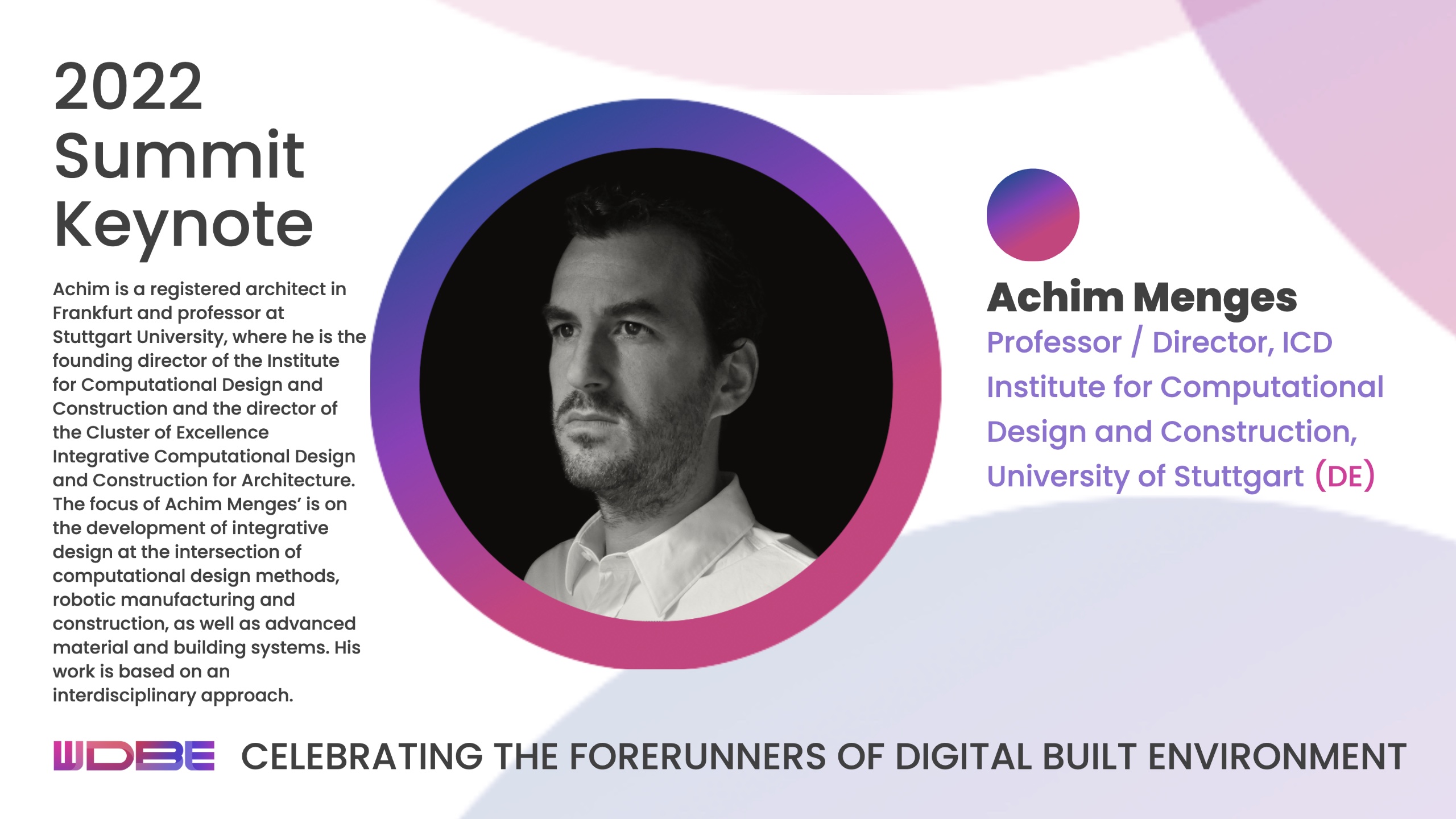Achim Menges is a world-renowned innovator in the field of new architectural expression and digital fabrication and a keynote speaker at WDBE in 2022. He shared his views on architecture and construction in an interview with Aarni Heiskanen.
Achim is a registered architect in Frankfurt, Germany, and a professor at the University of Stuttgart, where he is the founding director of the Institute for Computational Design and Construction. He’s also the director of the Cluster of Excellence called Integrative Computational Design and Construction for Architecture.
Discovering technology-powered architecture
When Achim was studying in the late 1990s, only a few architects were interested in robotic construction. Up to that time, Japanese companies had used robots to automate traditional construction tasks, but robots had not influenced architectural design in any meaningful manner. But after the turn of the century, the evolution of digital design tools and robotics opened new opportunities to combine digital design with physical construction to create a unified process.
Achim admired the work of Frei Otto, another Stuttgart professor who had already engineered lightweight tensile and membrane structures in the 1960s. Inspired by Otto’s work and powered by new technology, he aimed to create a new kind of architectural expression and material culture.
“I would say there’s a certain urgency to rethink design and construction because we know that the way we currently design and construct our buildings is not by any means future-proof,” Achim states.
Construction as a positive force
The construction sector creates 50% of all material waste globally and contributes significantly to carbon emissions. Thus, reducing the environmental load from this industry will have a substantial overall impact.
Achim suggests two solutions with an immediate effect. To reduce waste, why not use less material in the first place? And since cement production accounts for eight percent of global carbon emissions, why not replace concrete with wood or flax and hemp fibers? Digital design and construction also make it possible to trace building materials’ origins and their environmental footprint.
Unfortunately, there’s one caveat in lightweight construction—in order to achieve thermal and acoustic comfort, a building needs to have mass. Adding mass means adding more material, which contradicts the light construction concept.
“I think we also need to urgently explore alternative concepts of how we can ensure decent acoustic and thermal qualities without always coming back to adding more mass. That’s one of our key research areas in the Cluster of Excellence,” Achim explains.
The marriage of research and practice
The research teams at Stuttgart University have shown in real-life projects how aesthetically pleasing, functional, and sustainable architecture is achievable with digital fabrication. The Buga Wood and Buga Fiber pavilions are well-known examples of this.
Achim’s team’s next project is even more ambitious. They are designing a large building on the campus of the University of Stuttgart that will become the home base for more than 130 researchers in the Cluster of Excellence.
Achim points out that the previously mentioned examples are research and architecture projects simultaneously. They showcase digital fabrication, but at the same time they must follow the local building code and pass the permitting process.
These projects demonstrate the future of architectural research: a fusion of science and industrial application.
Innovation is not just about technology
Great minds and state-of-the-art technologies are not enough to push positive change. For that reason, the social sciences are an essential part of the university’s curriculum. Without understanding the social and political aspects of innovation, necessary changes will not happen in construction or in society.
“Sometimes the real problems are the non-technical barriers that we face that are deeply embedded in our institutions, our delivery models, our building codes, the whole framework of our regulations—institutionalizing how we deliver the design and the construction of a building,” Achim concludes.
You can meet Achim at WDBE in Helsinki on September 28, 2022. His keynote will be about the integration of design and construction. He wants to inspire us to start creating better buildings and shares examples of how that’s possible today—not just in some distant future.
Connect with Achim on LinkedIn. Check out the WDBE program and register for the physical and virtual event.
Listen to the whole interview on WDBE Talks.
View the original article and our Inspiration here


Leave a Reply